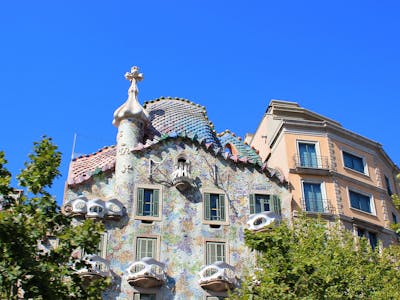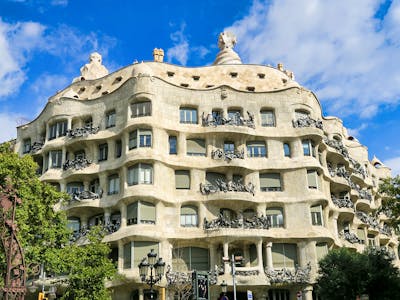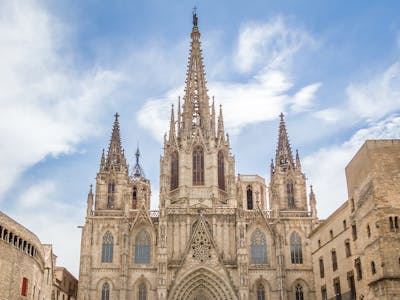The Museo Archeologico di Paestum, located in Southern Italy, offers an exquisite journey through the ancient Greek and Roman eras. Renowned for its extensive collection of archaeological artifacts, the museum holds historical significance, encasing the culture and stories of the prehistoric Greek era.
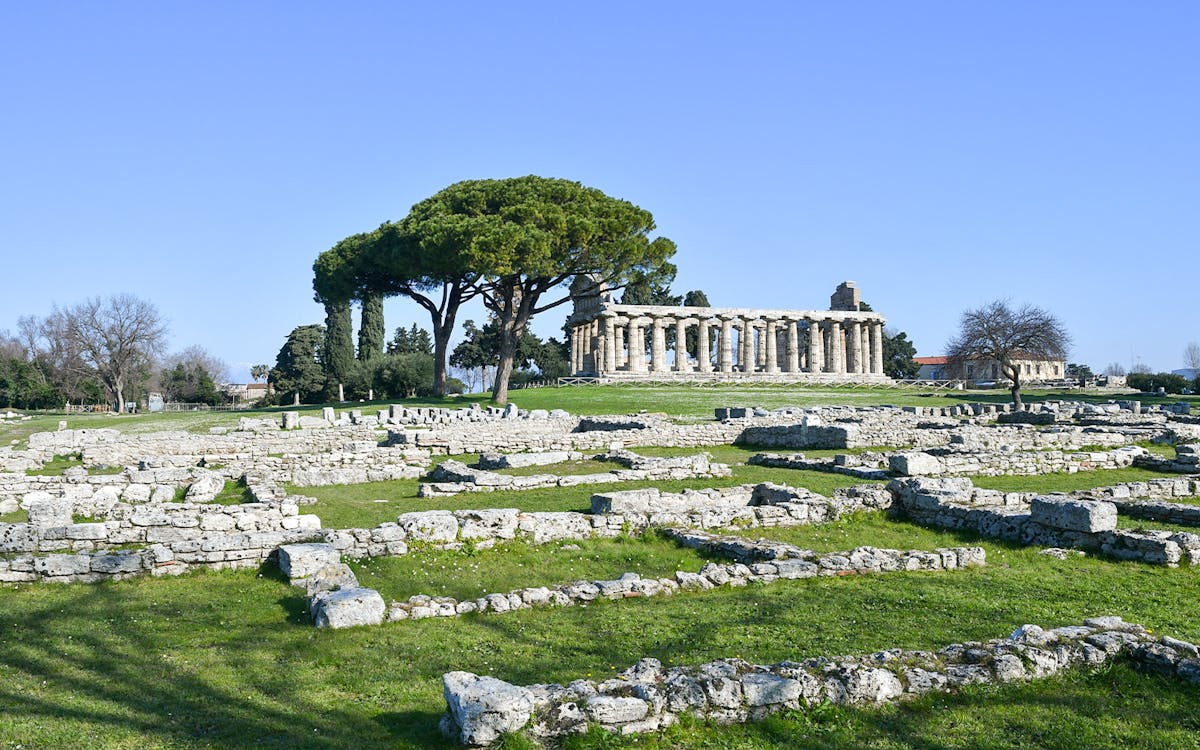
Paestum Museum - In A Nutshell
Handy Information
| ⏰ Suggested Duration: | 2-3 hour |
| ☀️ Best Time to Visit: | Early mornings |
| 🎫 Audio Guided Tour: | €49 |
| 🚆 Nearest Train Station | Paestum |
Must-See
Tomb of the Diver Fresco
Tapestry
The Three Greek Temples
Temenos
Things To Know
Opened in: 1952
Location: Via Magna Grecia
UNESCO site declared in: 1988
Architectural Style: Doric
Opening Hours And Address
Daily 8:30 AM to 7:30 PM
Address: Via Magna Graecia, 919, 84047 Capaccio SA, Italy
Get Directions
Why Visit Paestum Museum
- Unraveling history: Explore the fascinating past of the Greeks and Romans. The museum offers a unique timeline for history buffs to immerse in ancient tales.
- Architectural elegance: Admire the Greco-Roman architecture of the museum itself, a visual treat that mirrors the eras it represents.
- Discovering the ruins: Venture into the ruins of Paestum, a significant archaeological site. Learn about hidden tales as you tread through the remnants of the great civilizations.
- Vast collections: Discover the grand collection of vases, statues, frescoes, and tomb relics. Each artifact stands as a testament to ancient craftsmanship.
- Educational journey: An ideal destination for both children and adults to learn and appreciate the rich heritage and culture of the past civilizations.
Paestum Museum Tickets
Experience the museum with a professional guide who will provide insightful information about the exhibits.
History of Paestum Museum
The Museo Archeologico di Paestum was built in the 1950s to house the ancient ruins and artifacts of Paestum, a city founded by the Greeks in 600 BC. Over the centuries, Paestum was ruled by the Lucanians and Romans, each leaving their mark on the city. During the Lucanian period, Greek traditions blended with local customs, leading to significant growth. The Romans conquered Paestum in 273 BC, bringing further development in infrastructure, commerce, and architecture. After being abandoned in the Middle Ages, the city remained hidden until its rediscovery in the 18th century, when a road construction project uncovered its ruins.
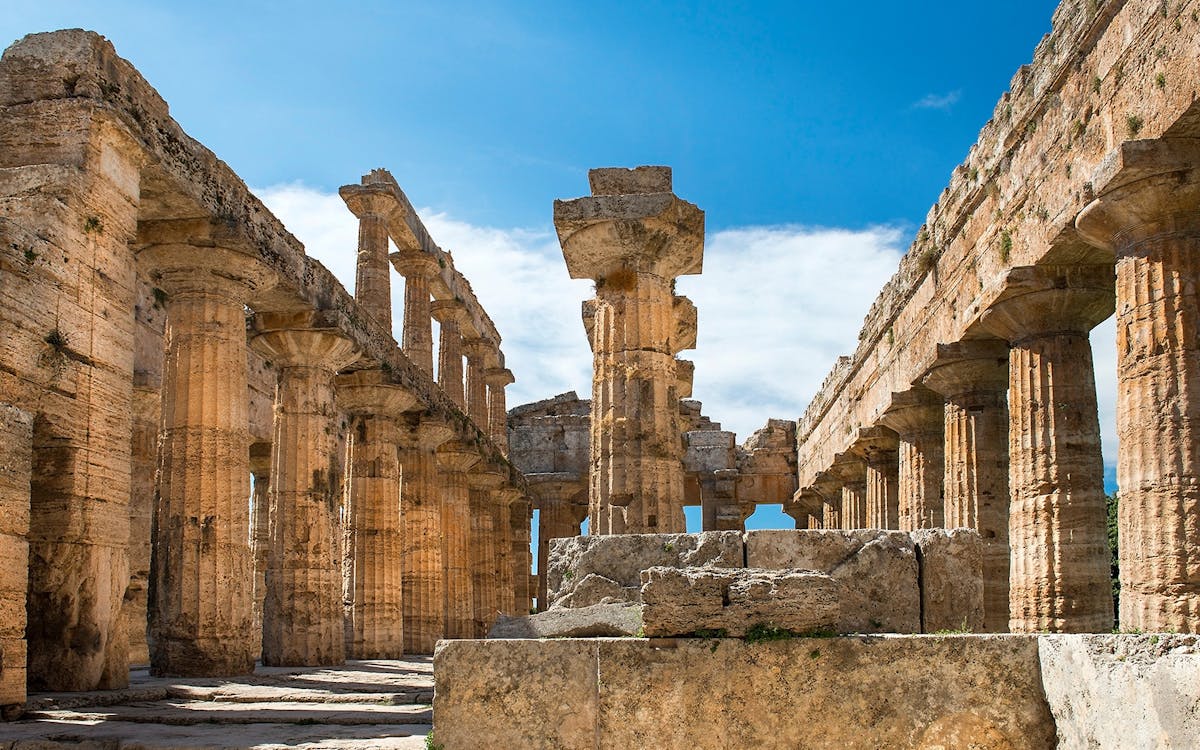
Architecture in the Paestum Archaeological site
The Paestum Archaeological Site is a unique fusion of Greek and Roman architectural styles. The original Greek design, featuring three majestic Doric temples - the Temple of Hera, the Temple of Athena, and the Temple of Neptune - is integrated with Roman additions. The temples, characterized by sturdy columns and simple elegance, showcase the classic Doric order. After the Roman conquest, the site was expanded to include Roman-style buildings, civic structures, and a forum, resulting in a rich architectural diversity that blends the best of both cultures.
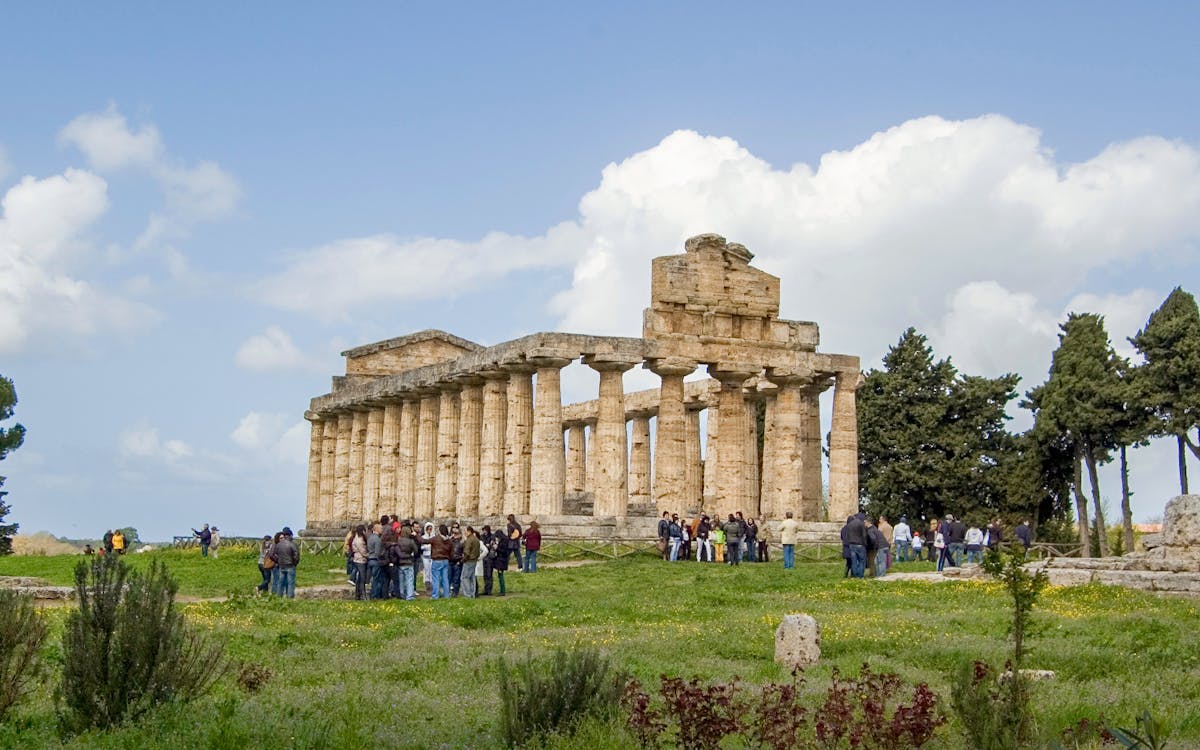
Highlights of Paestum Museum
1Tomb Of The Diver Fresco
The museum's crown jewel is the renowned Tomb of the Diver fresco, a 5th-century BC masterpiece that poignantly captures ancient Greek funerary beliefs. This exquisite artwork depicts a young man plunging into the water, symbolizing the passage from life to the afterlife, and showcases the profound depth and sophistication of ancient Greek art.

2Symposium Scenes
These are a series of frescoes depicting traditional Greek banquet scenes, known as symposia. These ornate assemblies were not merely social gatherings; they were intellectual discourse platforms where philosophical ideas were exchanged. The frescoes vividly capture these gatherings' atmosphere, adding another dimension to understanding the cultural practices of the ancient Greeks.
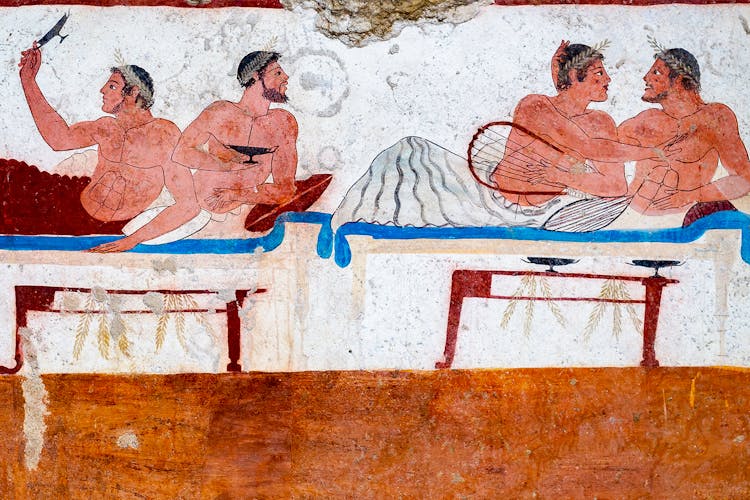
3Metopes
Metopes are square spaces found on the front of a Greek temple, filled with sculptural decoration. At the museum, you can find the beautifully crafted metopes of Heraion at the mouth of Sele River.
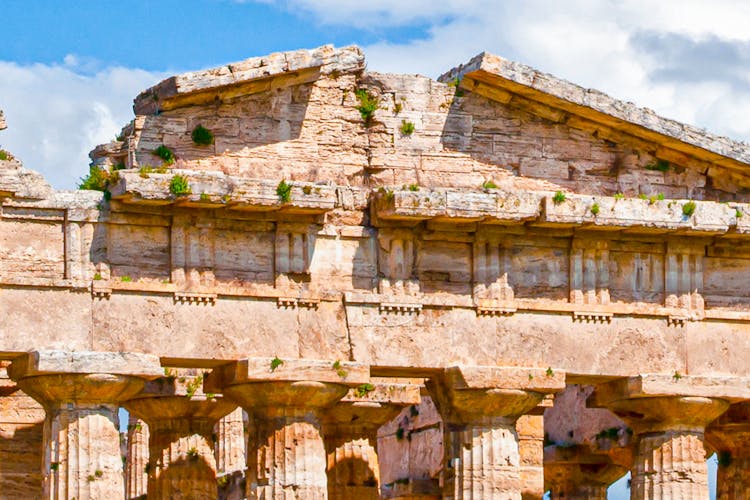
4The Necropolis Of Poseidonia-Paestum
This is one of the best-preserved cemeteries of Magna Graecia, which hosts over 2000 graves dating from the 7th century BC to the 4th century AD.
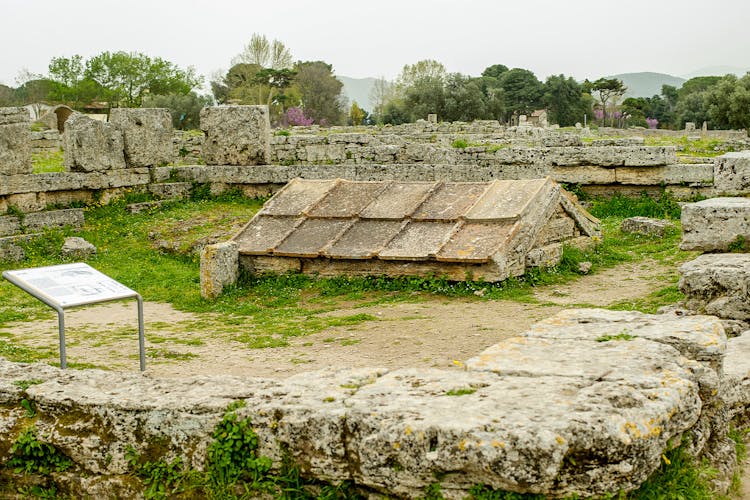
5The Forum
Once the heart of the city's public life, the Forum in Paestum is a must-visit. Although remodeling during the Roman period has slightly altered its original layout, the site retains its powerful historical atmosphere.
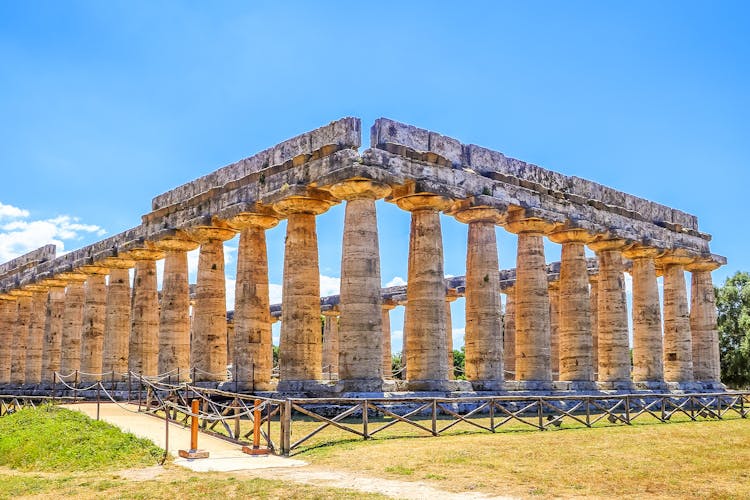
6The museum's collection of ancient Greek vases
Get to admire the vast collection of Greek vases stored in the museum. These vases, showcasing the finesse of ancient Greek pottery, date back to various periods and are ornamented with an array of intricate designs and scenes from mythology.
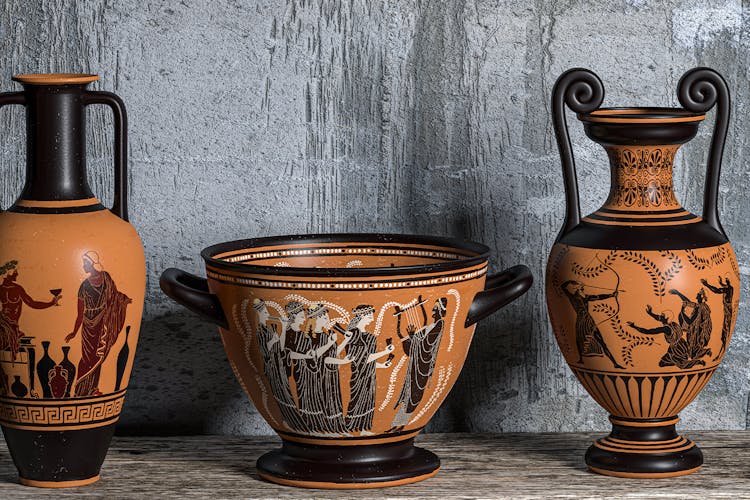
7The Stelae in the Oscan language
These are inscribed stones, bearing text in the Oscan language, an ancient language of southern Italy. The museum houses a few of these stelae, providing researchers and history enthusiasts with a fascinating glimpse into the dialect and script of the Oscan people.
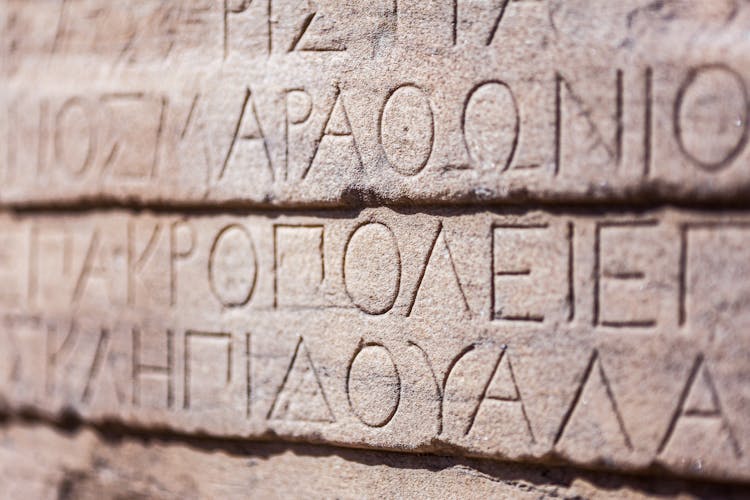
Best Time To Visit Paestum Museum
The best time to visit the Paestum museum is during the off-peak season (April-June and September-November), as the area is less crowded, making your tour more enjoyable. Early mornings are also recommended for the visit. The weather during these periods is generally mild, perfect for exploring the museum and the ruins at your leisure.
Paestum Museum timings
- During the summer months of April to June, the museum opens early at 8:30am and closes late at 7:30pm. Last admission is at 6:50pm.
- When winter sets in from November to March, the museum maintains opening hours starting from 8:30am and ending at 5pm. Last admission is at 4pm.
- The museum remains closed on two days of the year: December 25 and January 1.
Getting there
- By Train: Paestum station is well-served by trains from Naples, Salerno, and Pompeii. After alighting the train, a short walk of about 15 minutes will bring you to the museum.
- By Bus: Several buses connect Paestum with some of the most renowned places in Campania like Naples, Salerno, Amalfi, and Positano. You can opt for a round trip from Salerno to Paestum. The museum is a 20-minute-walk from the bus stop.
- By Car: If you're driving, take the A3 Salerno-Reggio Calabria Highway and exit at Battipaglia. From there, follow signs to Paestum. You can park your vehicle at Parking da Matteo Zona Archeologica.
Insider tips to visiting Paestum Museum
- Due to the extensive walking involved, it is advised to wear comfortable shoes. Sunscreen and hats are also recommended during the summer months.
- You're allowed to take pictures inside the museum and at the archaeological site, but the use of flash is prohibited.
- It's best to allow at least a half day for your visit to fully immerse yourself in the history of the museum and archaeological site.
- Consider buying a guided tour ticket to the archaeological site. Guided tours can provide you with insightful details about the historical and cultural significance of the exhibits, making your visit both educational and fascinating.
- You can access the site with Artecard Campania which offers free admission or reduced rates to many cultural attractions in Campania.
Restaurants Near Paestum Museum

Located right on the beach, this restaurant offers panoramic views and a wide choice of seafood dishes, pasta, and local delicacies.
Distance from Paestum Museum: 250 m

La Bottega del Gusto is a charming restaurant that prides itself on using carefully selected local ingredients for a genuine taste of Italian cuisine. It's known for its casual, cozy atmosphere and a menu that varies seasonally
Distance from Paestum Museum: 600 m

Located in a restored 17th-century building, Domus Clelia is a popular spot for fine dining. The restaurant boasts an elegant atmosphere and a menu that beautifully represents the region's rich culinary tradition.
Distance from Paestum Museum: 650 m
Other Attractions Around Paestum Museum

